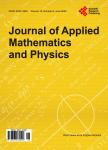Electron Auto-Localization Tailored by Its Thermal Energy: Dynamic Matrix Approach (DMA)
Electron Auto-Localization Tailored by Its Thermal Energy: Dynamic Matrix Approach (DMA)作者机构:Research Unit Condensed Matter Electronics and Signal Processing Université de Dschang Dschang Cameroon Department of Physics Higher Teacher Training College University of Bamenda Bambili Cameroon Centre d’études et de Recherches en Agronomie et en Biodiversité Faculté d’Agronomie et des Sciences Agricoles University of Dschang Dschang Cameroon
出 版 物:《Journal of Applied Mathematics and Physics》 (应用数学与应用物理(英文))
年 卷 期:2021年第9卷第3期
页 面:515-527页
学科分类:080901[工学-物理电子学] 0809[工学-电子科学与技术(可授工学、理学学位)] 08[工学] 080401[工学-精密仪器及机械] 0804[工学-仪器科学与技术] 0803[工学-光学工程]
主 题:Autolocalization Quantum Phase Transition Self-Trapping Critical Temperature
摘 要:This paper investigates the thermal energy effect on electron auto-localization. The polaron characteristics (self-action potential and effective mass) are observed to be expressed via the renormalized electron-phonon coupling constant tailored by the thermal energy. Low temperatures are observed to favour auto-localization of the carrier while high temperatures favour polaron undressing and subsequent quenching of the quantum behaviour thereby rendering the system classical. The critical (transition) temperature τc expressed via the critical coupling constant ϒC is found to be the separating boundary between the quantum and the classical phases. Therefore, the polaron undergoes phase transition (from self-tapped to quasi free states) when the temperature of the medium is enhanced.



